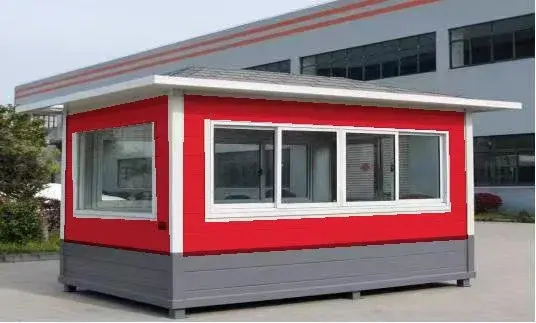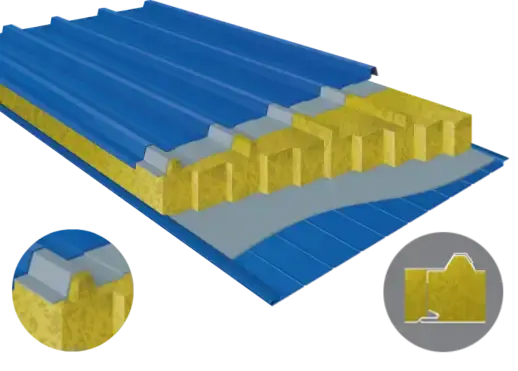The Science Behind Green Thermal Insulation Panels and Humidity Control
Understanding the Relationship Between Insulation and Moisture
Green thermal insulation panels, as advanced building materials, play a pivotal role in managing indoor humidity levels. These panels, crafted from sustainable materials like recycled denim, sheep's wool, or soybean-based foams, offer a unique approach to moisture control. Unlike traditional insulation, green thermal insulation panels are designed with vapor-permeable properties, allowing them to "breathe" while still maintaining their thermal efficiency.
The relationship between insulation and moisture is complex. Green thermal insulation panels manufacturer emphasizes the importance of balancing thermal resistance with moisture management. These panels work by creating a barrier that slows down heat transfer while simultaneously allowing water vapor to pass through. This characteristic is crucial in preventing condensation within walls, which can lead to mold growth and structural damage.
How Green Thermal Insulation Panels Regulate Moisture Movement?
Green thermal insulation panels regulate moisture movement through a process called vapor diffusion. This mechanism allows water vapor to pass through the insulation material at a controlled rate, preventing excessive moisture buildup within the building envelope. The panels' structure, often composed of interlocking fibers or open-cell foams, creates microscopic pathways for water vapor to travel through.
Additionally, many green thermal insulation panels incorporate hygroscopic properties. This means they can absorb excess moisture from the air when humidity is high and release it when the air becomes drier. This dynamic moisture buffering helps maintain a more stable indoor humidity level, contributing to a healthier and more comfortable living environment.
The Impact of Green Thermal Insulation Panels on Dew Point and Condensation
One of the most significant benefits of green thermal insulation panels is their ability to mitigate condensation issues by influencing the dew point within wall assemblies. The dew point is the temperature at which water vapor in the air condenses into liquid water. By providing a thermal break and managing vapor movement, these panels help keep the temperature of interior surfaces above the dew point, thereby reducing the risk of condensation.
Green thermal insulation panels achieve this by creating a more gradual temperature gradient across the wall assembly. This gradual change helps ensure that the temperature doesn't drop below the dew point at any point within the wall, effectively preventing condensation and the associated problems of mold growth and material deterioration.
Benefits of Green Thermal Insulation Panels for Indoor Air Quality
Reducing Allergens and Mold Growth
Green thermal insulation panels offer significant advantages in improving indoor air quality by effectively reducing allergens and inhibiting mold growth. These eco-friendly panels are often made from materials that naturally resist mold and mildew, such as sheep's wool or recycled cotton. The moisture-regulating properties of green thermal insulation panels help maintain optimal humidity levels, creating an environment less conducive to mold proliferation.
By preventing excess moisture accumulation within walls and other building elements, green thermal insulation panels minimize the conditions that typically foster mold growth. This not only protects the structural integrity of the building but also significantly reduces the presence of airborne mold spores, a common trigger for allergies and respiratory issues. The green thermal insulation panels manufacturer often highlights this feature as a key benefit for homeowners and building occupants concerned about indoor air quality.
Enhancing Ventilation and Air Circulation
While green thermal insulation panels provide an effective barrier against heat transfer, they also contribute to enhanced ventilation and air circulation within a building. Many types of green insulation materials, such as cellulose or wood fiber panels, are breathable, allowing for the natural movement of air and moisture. This breathability is crucial in maintaining a healthy indoor environment.
The balanced approach of green thermal insulation panels in managing heat, air, and moisture movement helps create a more stable indoor climate. This stability reduces the workload on HVAC systems, allowing for more efficient and effective ventilation. Improved air circulation not only contributes to better temperature regulation but also helps in dispersing indoor pollutants, further enhancing air quality.
Long-term Health Benefits of Controlled Humidity
The ability of green thermal insulation panels to regulate indoor humidity levels has far-reaching implications for occupant health. Maintaining humidity within the optimal range (typically between 30% and 50%) can significantly reduce the prevalence of respiratory issues, allergies, and other health concerns associated with poor indoor air quality.
Controlled humidity levels achieved through the use of green thermal insulation panels can help alleviate symptoms of asthma and allergies by reducing dust mites and other allergens that thrive in high-humidity environments. Additionally, proper humidity control can prevent the drying out of mucous membranes, reducing susceptibility to colds and respiratory infections. The long-term health benefits of living in a properly insulated and humidity-controlled environment underscore the importance of choosing the right green thermal insulation panels for both new constructions and retrofits.
Implementing Green Thermal Insulation Panels for Optimal Humidity Control
Choosing the Right Type of Green Thermal Insulation
Selecting the appropriate green thermal insulation panels is crucial for effective humidity control. Different materials offer varying levels of moisture management and thermal performance. For instance, natural fiber insulations like hemp or sheep's wool have excellent hygroscopic properties, allowing them to absorb and release moisture without losing their insulative qualities. On the other hand, recycled plastic insulations might offer better resistance to water absorption but may require additional vapor barriers.
When choosing green thermal insulation panels, consider factors such as the local climate, building design, and specific humidity challenges. A reputable green thermal insulation panels manufacturer can provide guidance on the best options for your particular needs. It's also important to look at certifications and ratings that indicate the material's performance in terms of moisture control and thermal resistance.
Proper Installation Techniques for Maximum Effectiveness
The effectiveness of green thermal insulation panels in controlling humidity largely depends on proper installation. Even the highest quality panels can underperform if not installed correctly. Key considerations include:
- Ensuring a tight fit without gaps or compression
- Properly sealing joints and penetrations to prevent air and moisture leakage
- Installing appropriate vapor barriers or retarders when necessary
- Addressing thermal bridges that can lead to condensation
Professional installation is often recommended to ensure that green thermal insulation panels are integrated correctly with other building components. This includes proper interfacing with ventilation systems and consideration of the building's overall moisture management strategy. Correct installation not only maximizes the panels' humidity control capabilities but also ensures their longevity and performance over time.
Monitoring and Maintaining Optimal Humidity Levels
While green thermal insulation panels play a significant role in humidity control, ongoing monitoring and maintenance are essential for optimal performance. Implementing a humidity monitoring system can help track indoor moisture levels and identify any issues early on. Regular inspections of the insulation and surrounding structures can detect any signs of moisture problems, such as condensation or mold growth.
Maintenance practices may include:
- Regularly checking and cleaning ventilation systems
- Addressing any leaks or water intrusion promptly
- Adjusting HVAC settings to complement the insulation's performance
- Periodically reviewing the effectiveness of the insulation system
By actively monitoring and maintaining optimal humidity levels, building owners can ensure that their green thermal insulation panels continue to provide effective moisture control and contribute to a healthy indoor environment. This proactive approach not only enhances the performance of the insulation but also extends its lifespan, maximizing the return on investment in these eco-friendly building materials.
Conclusion
Green thermal insulation panels offer a multifaceted solution to indoor humidity control, significantly impacting air quality and overall building health. By effectively managing moisture transfer, these eco-friendly materials create a more stable and comfortable indoor environment. Their ability to regulate humidity levels not only enhances occupant comfort but also contributes to the longevity of building structures by preventing moisture-related damages. As we've explored, the benefits extend beyond mere insulation, encompassing improved air quality, reduced allergen presence, and enhanced energy efficiency. The implementation of green thermal insulation panels represents a forward-thinking approach to sustainable building practices, aligning with both environmental consciousness and occupant well-being.
Are you ready to transform your living or working space with state-of-the-art green thermal insulation panels? At Weifang Sandong Building Materials Co., Ltd., we offer customizable, high-performance green thermal insulation solutions tailored to your specific needs. Our panels not only provide superior insulation but also contribute to a healthier, more comfortable indoor environment. Experience the difference that proper humidity control and energy efficiency can make in your building. Contact us today at info@sdqsc.com to learn more about our products and how we can help you create a more sustainable, comfortable, and energy-efficient space.
FAQs
What makes green thermal insulation panels different from traditional insulation?
Green thermal insulation panels are made from sustainable or recycled materials and offer improved moisture management alongside thermal insulation.
Can green thermal insulation panels completely eliminate humidity issues?
While they significantly improve humidity control, they work best as part of a comprehensive moisture management strategy in buildings.
Are green thermal insulation panels suitable for all climates?
Yes, but the specific type may vary based on local climate conditions. Consult with a professional for the best choice for your area.
How long do green thermal insulation panels typically last?
With proper installation and maintenance, they can last for decades, often matching or exceeding the lifespan of the building.
Do green thermal insulation panels require special maintenance?
Generally, they require minimal maintenance, but regular inspections are recommended to ensure optimal performance.
References
1. U.S. Department of Energy. (2021). "Insulation". Energy.gov.
2. Environmental Protection Agency. (2022). "Moisture Control Guidance for Building Design, Construction and Maintenance". EPA.gov.
3. Lawrence Berkeley National Laboratory. (2020). "Indoor Air Quality Scientific Findings Resource Bank". IAQscience.lbl.gov.
4. American Society of Heating, Refrigerating and Air-Conditioning Engineers. (2021). "ASHRAE Handbook - Fundamentals". ASHRAE.org.
5. Building Science Corporation. (2022). "Moisture Control for Buildings". BuildingScience.com.
